Iguazu / 3-Country Corner Paraguay, Brazil, Argentina: Part 2
Argitaratu: 12.02.2019

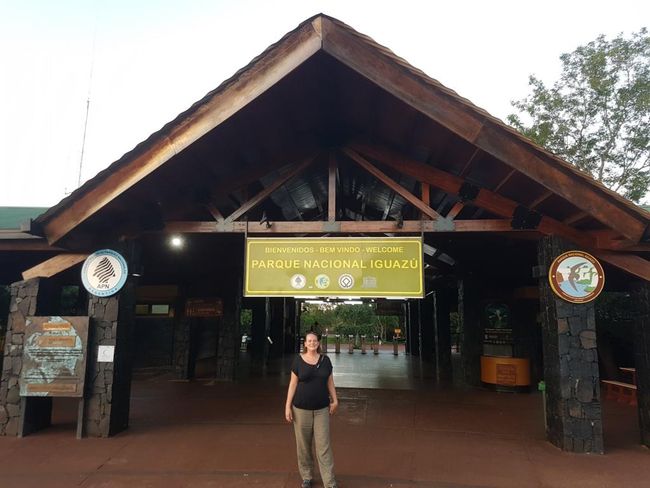
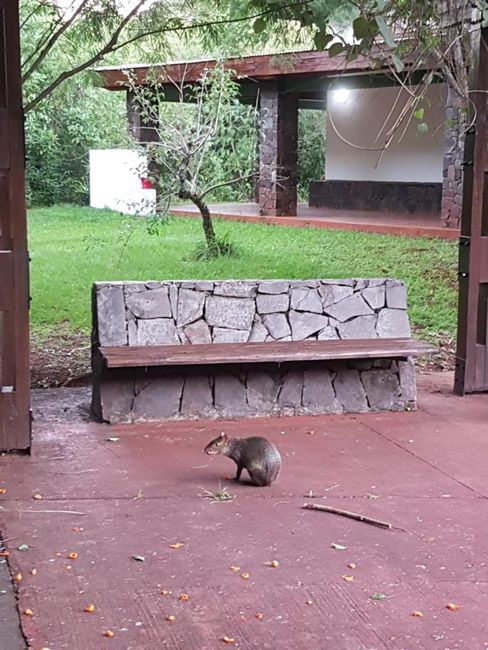
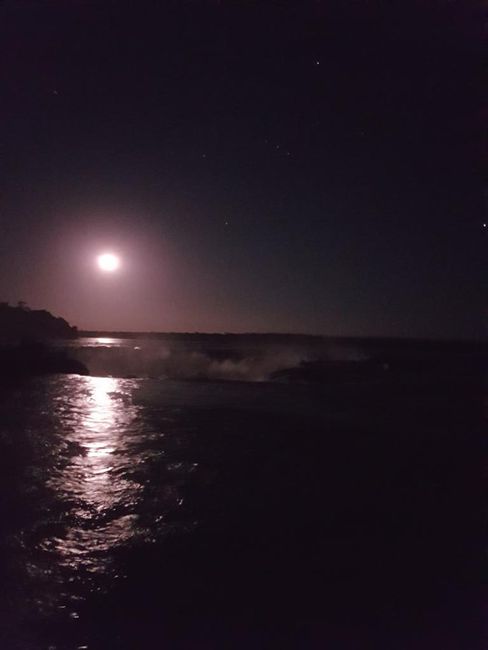
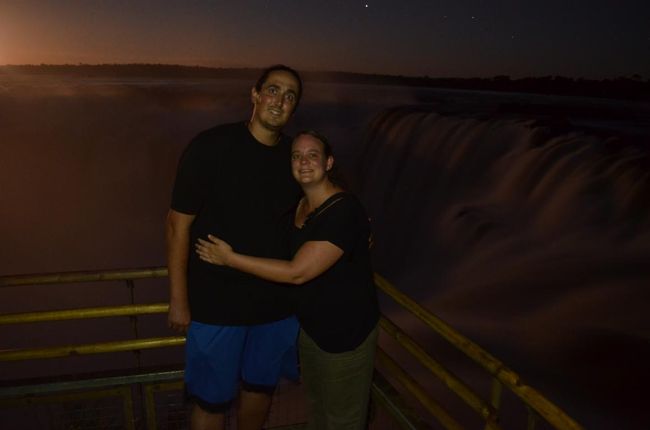
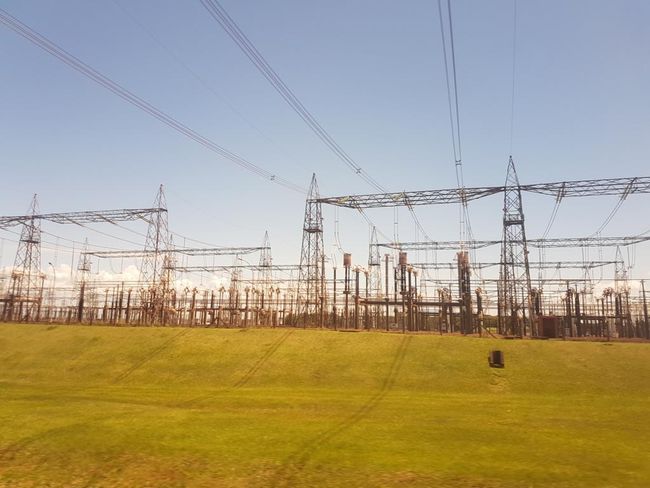
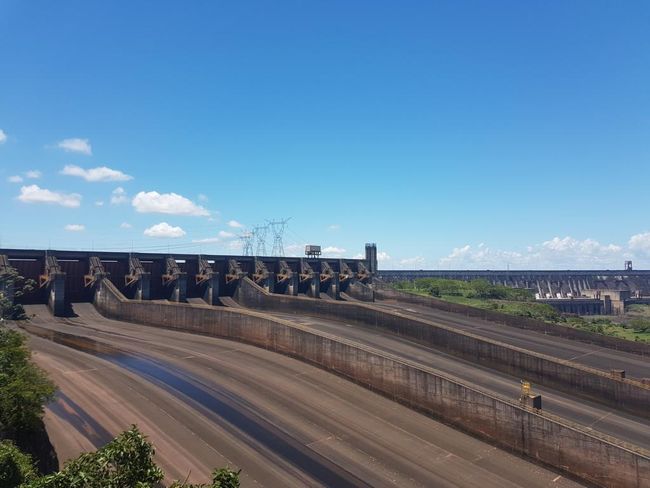
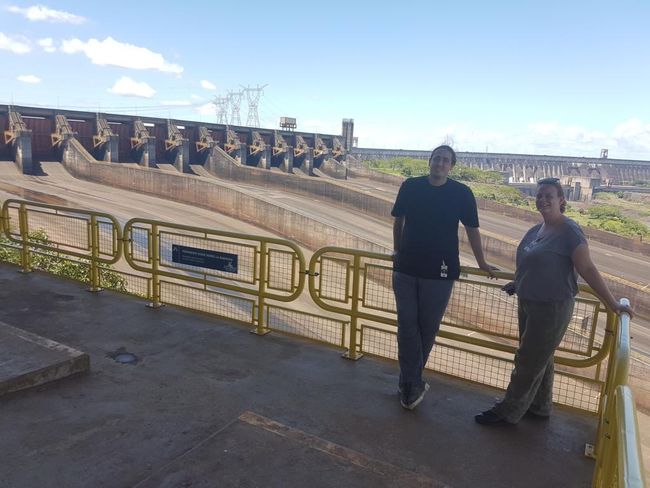
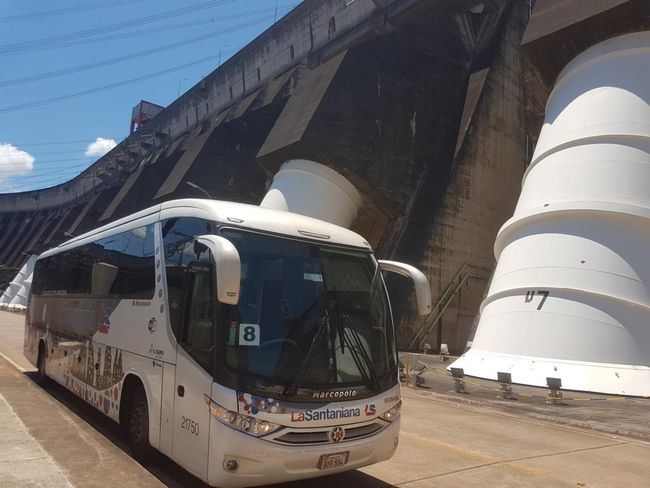
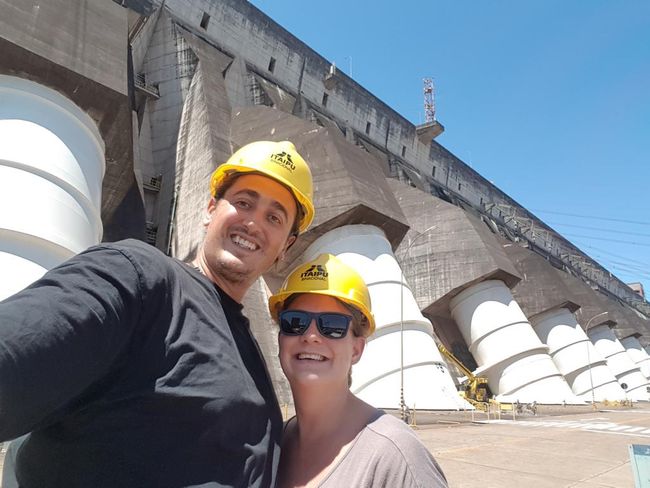
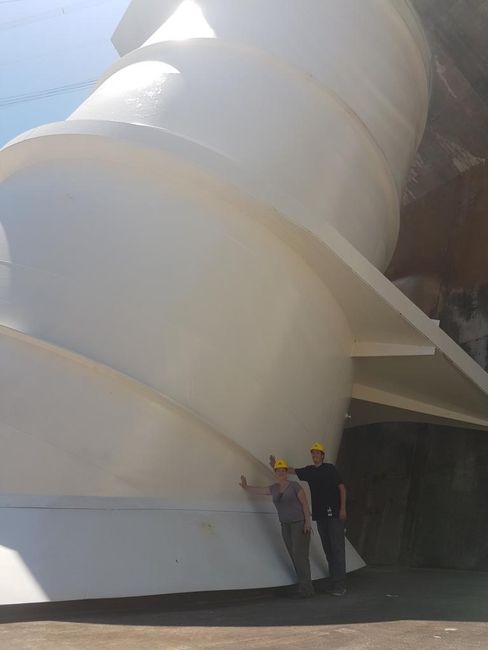
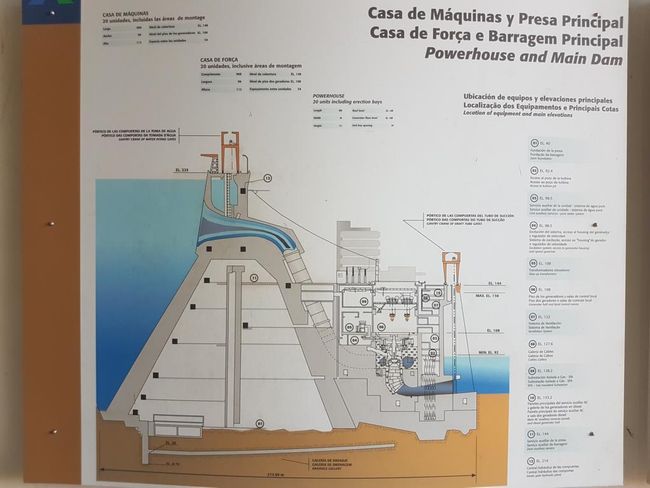
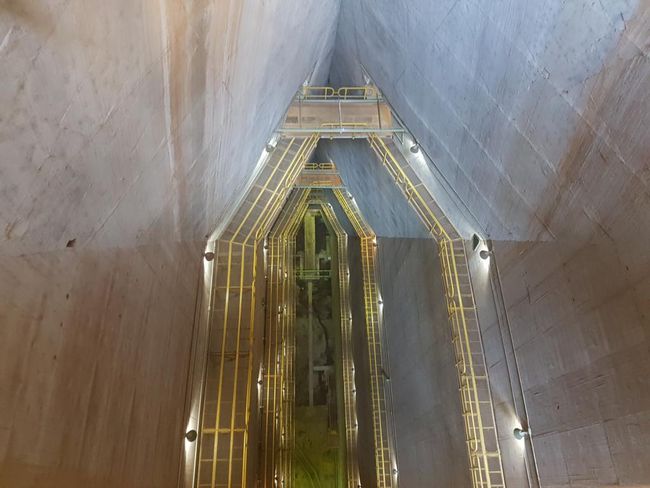
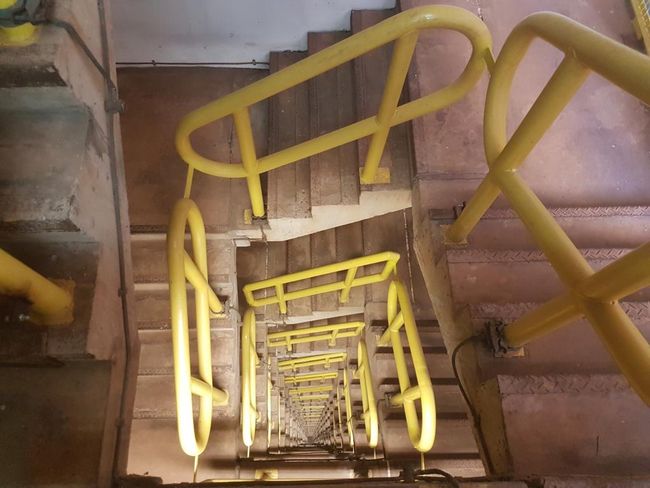
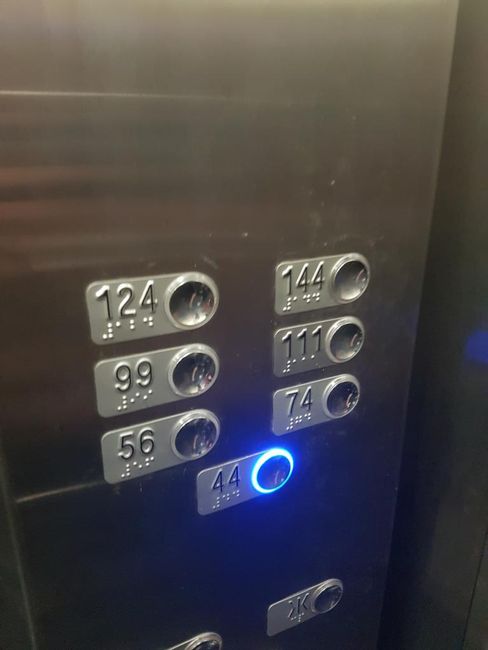
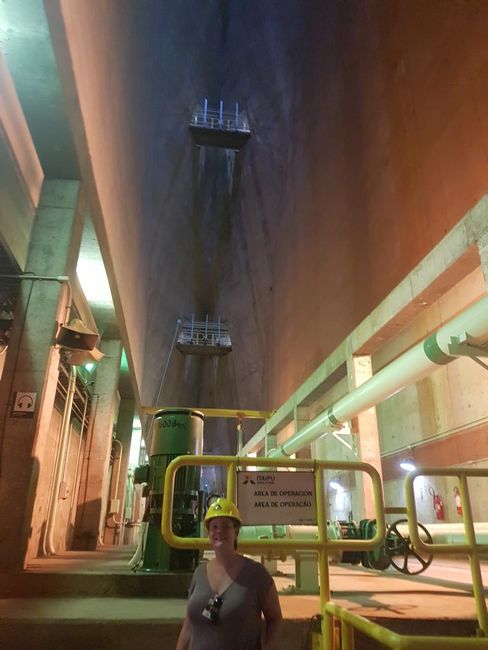
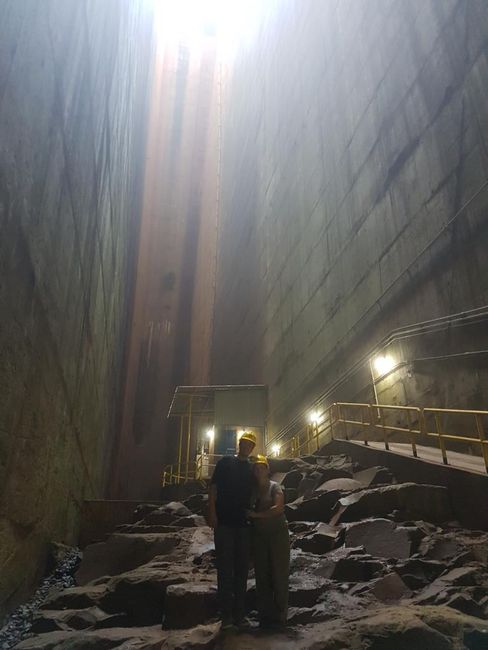
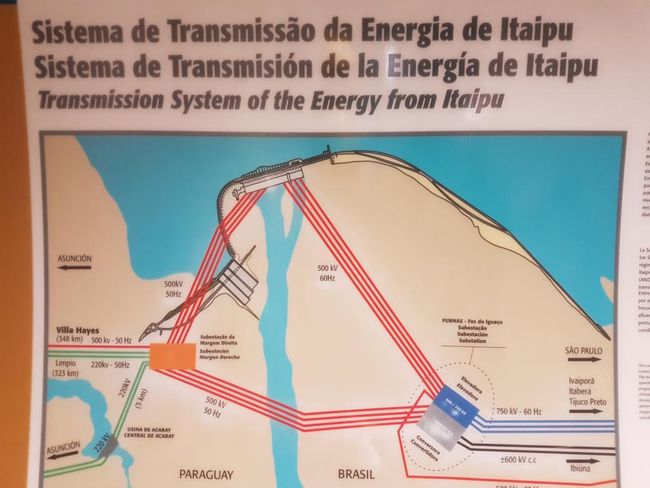
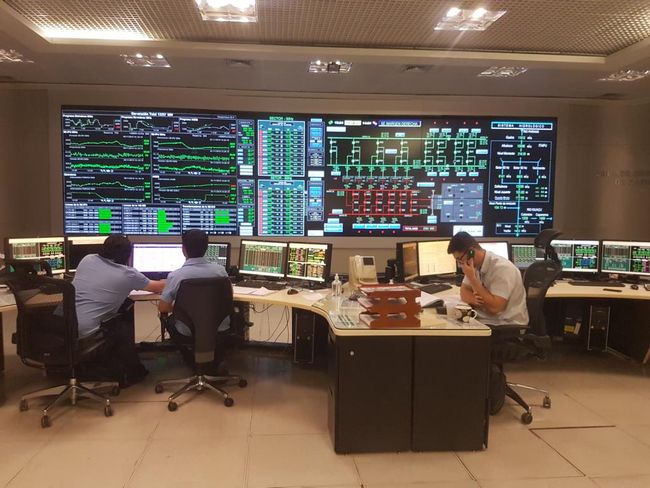
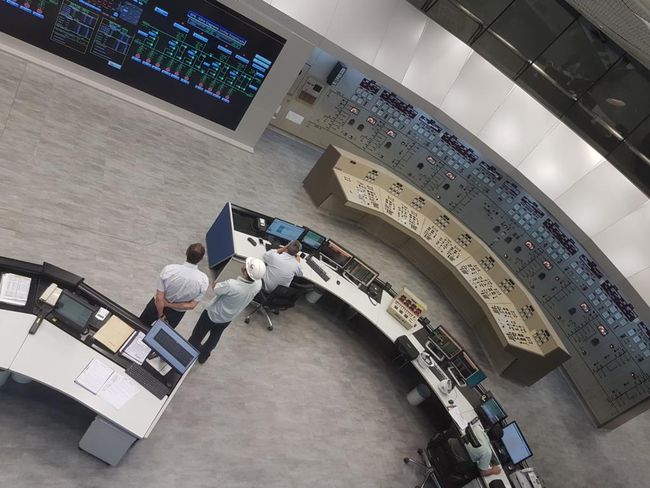
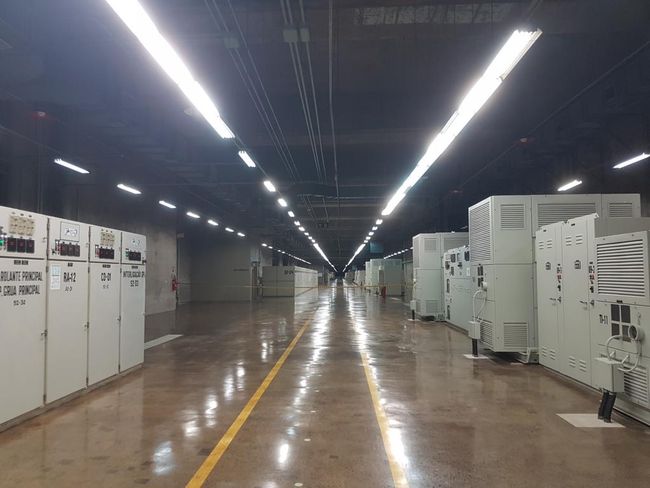
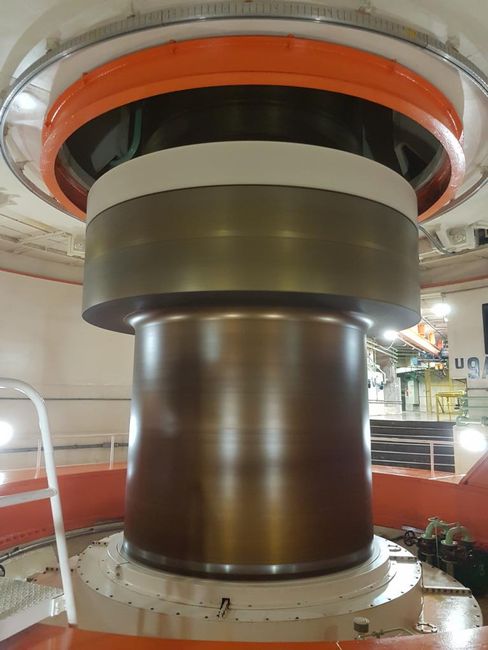
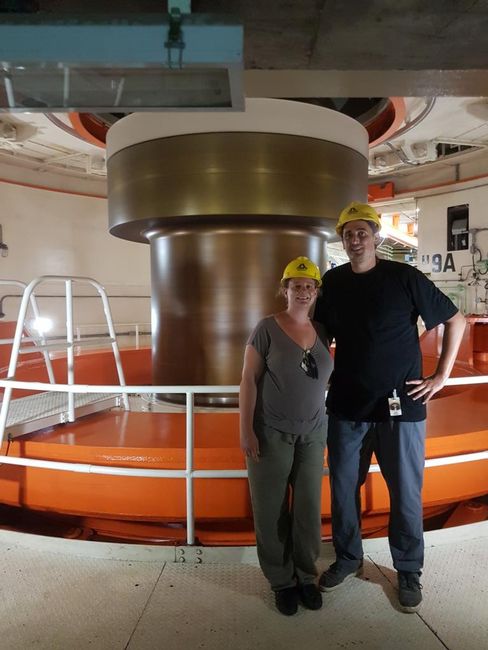
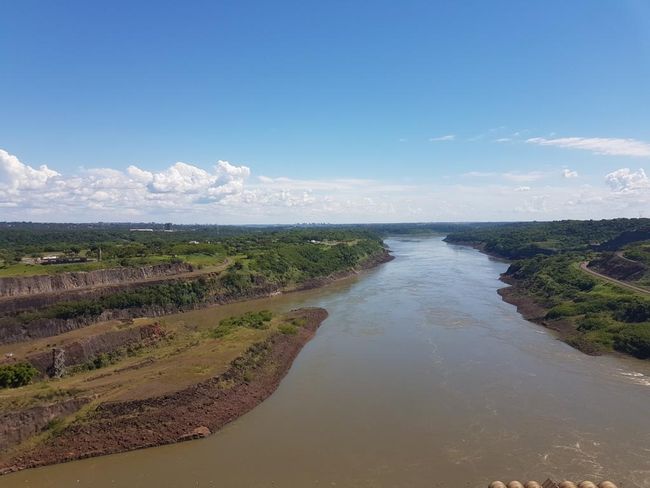
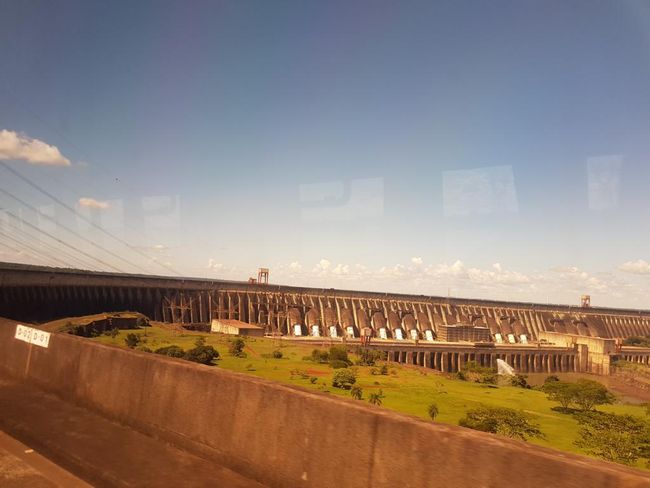
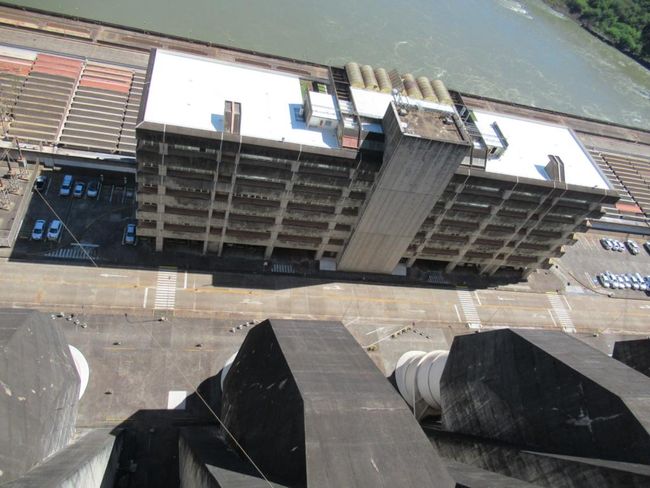
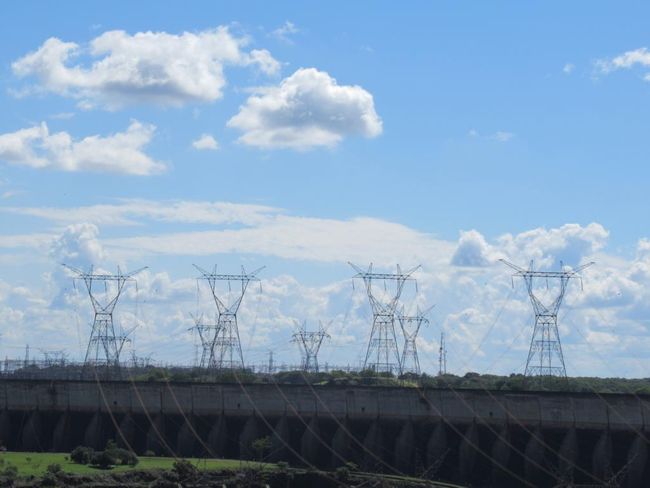
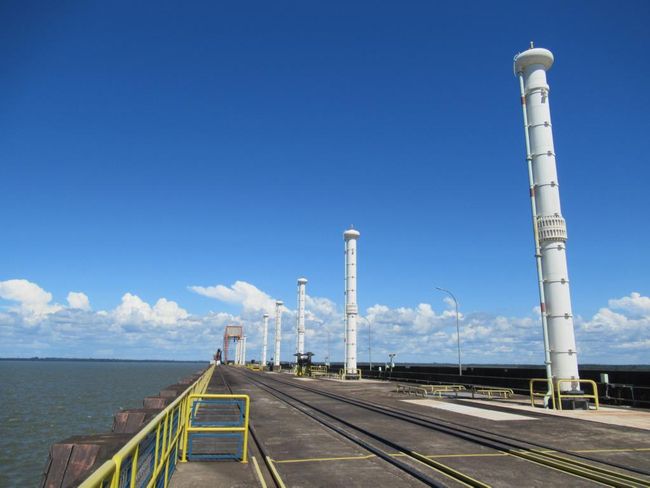
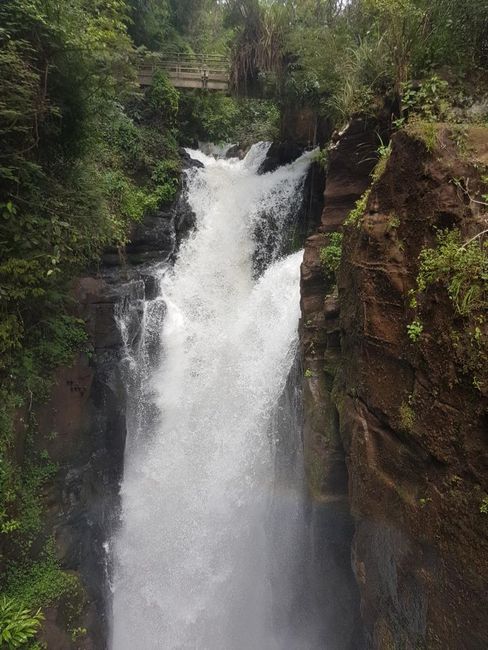
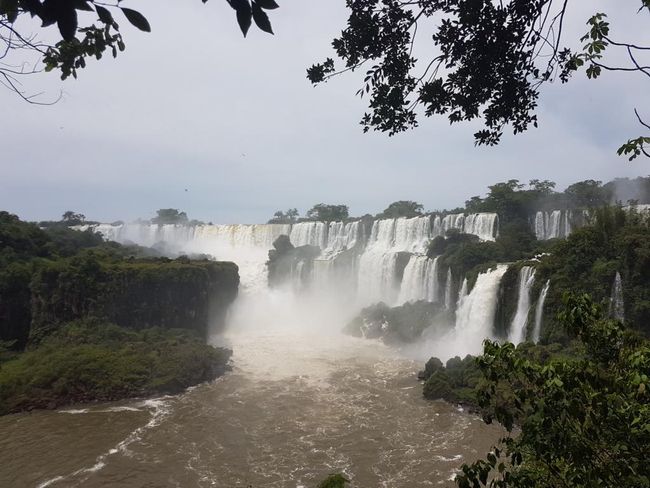
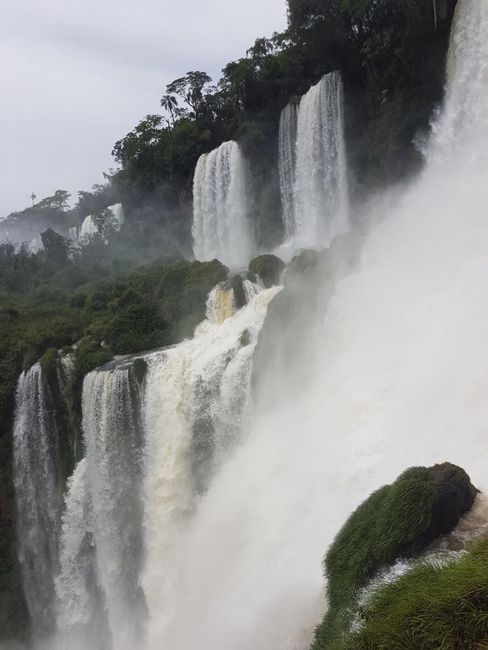
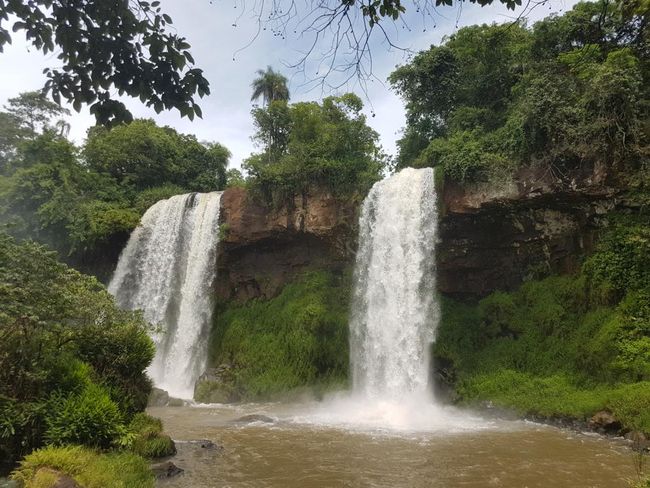
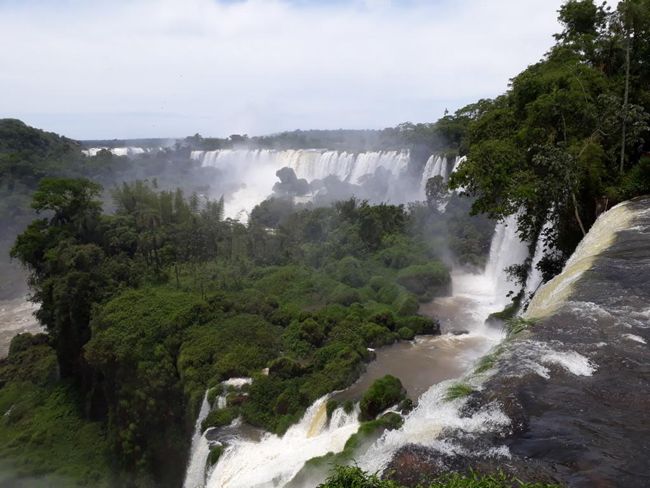
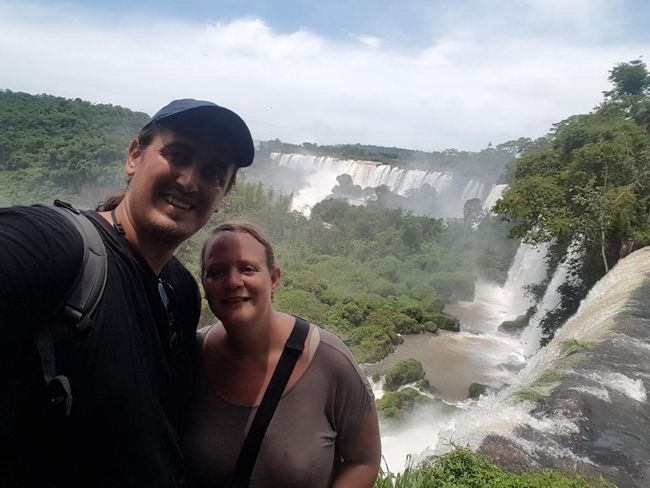
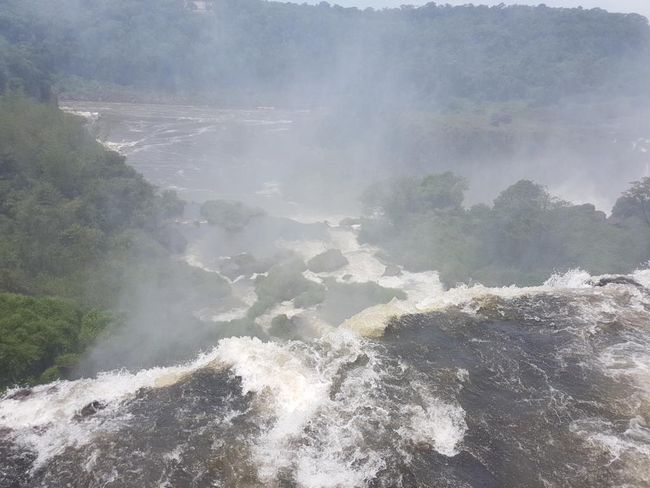
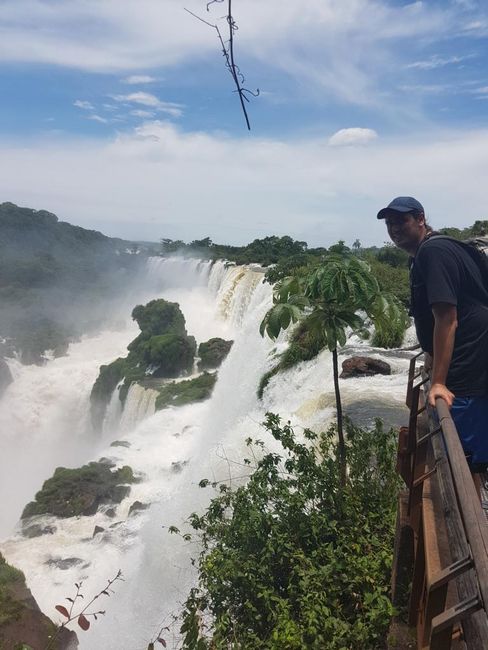
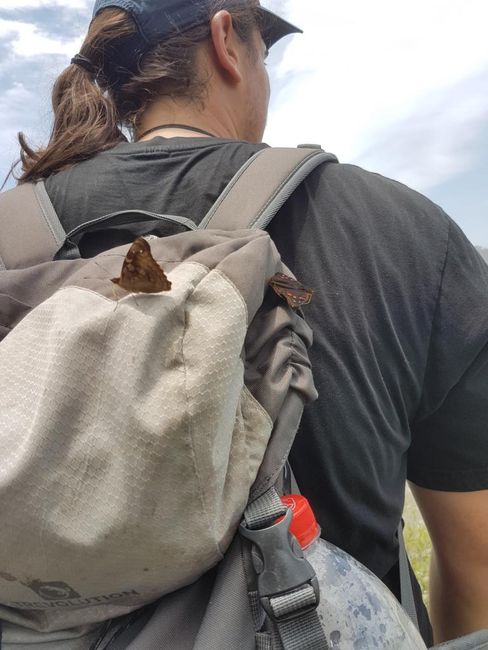
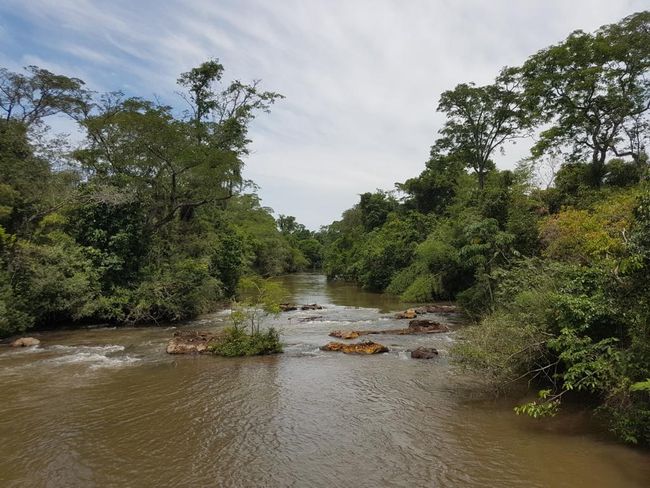
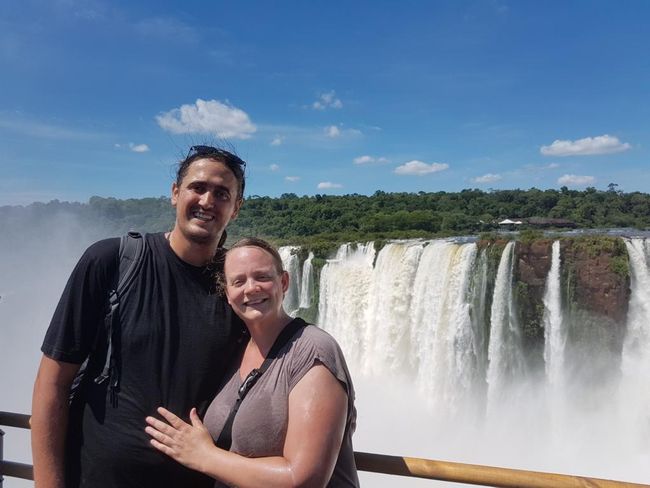
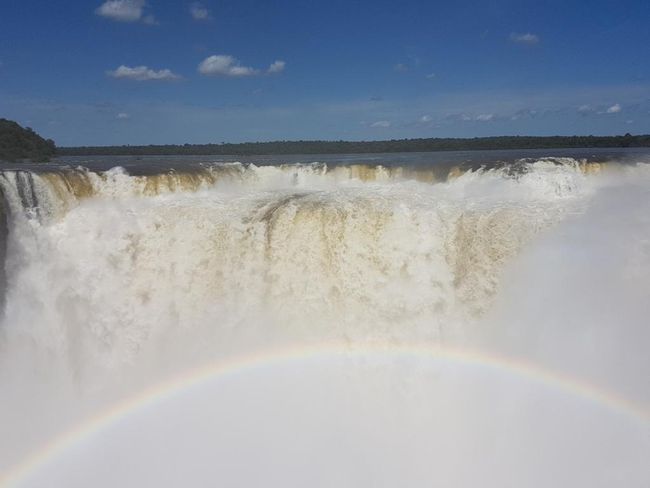
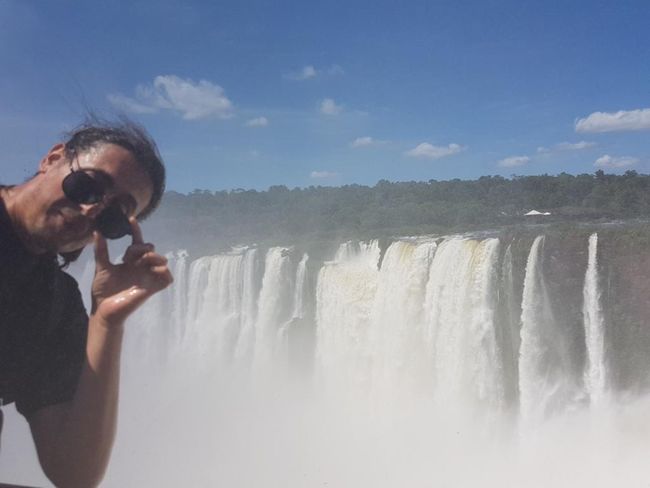
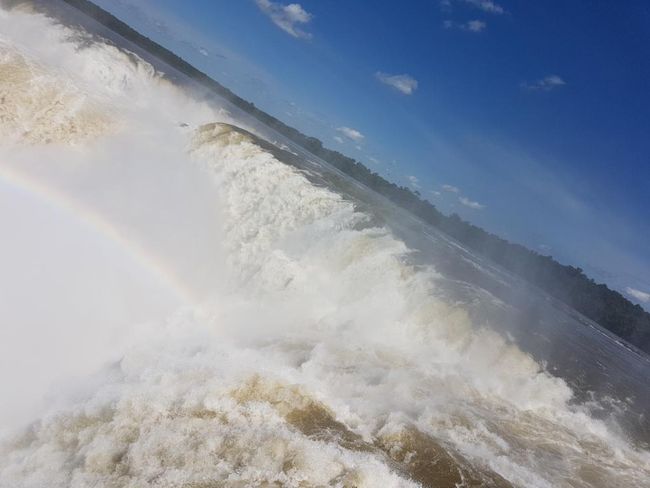
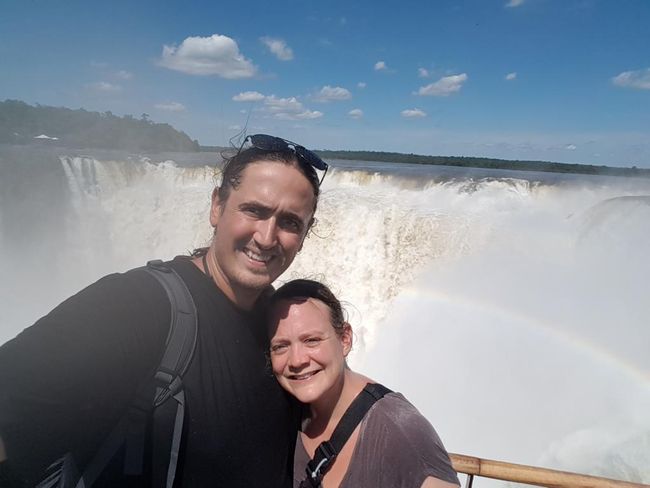
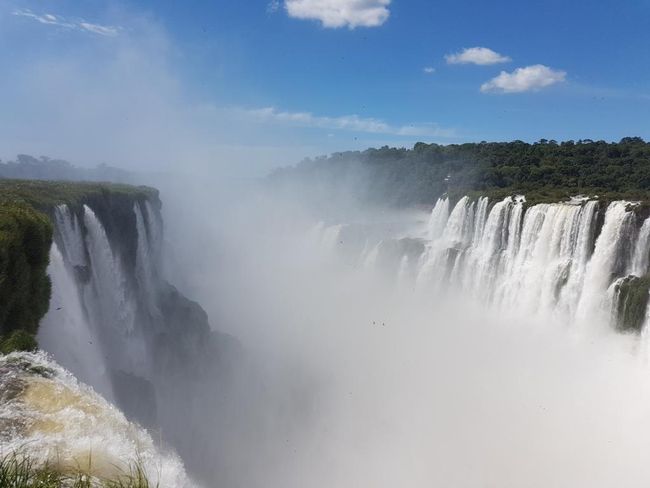
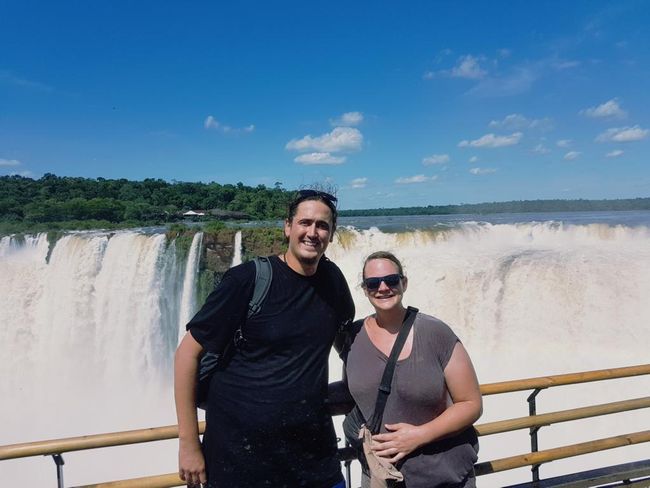
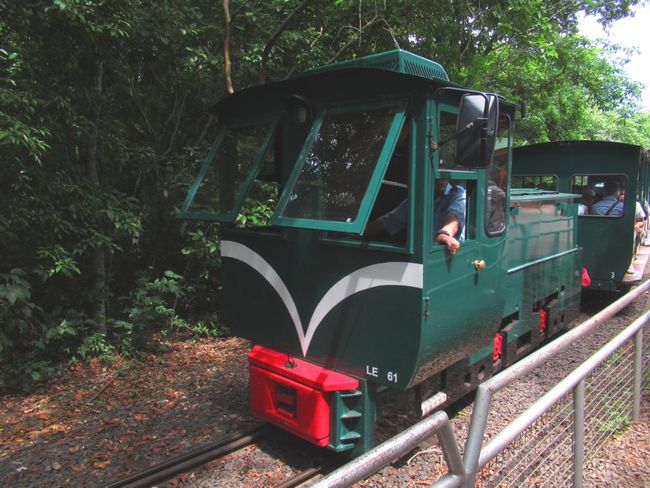
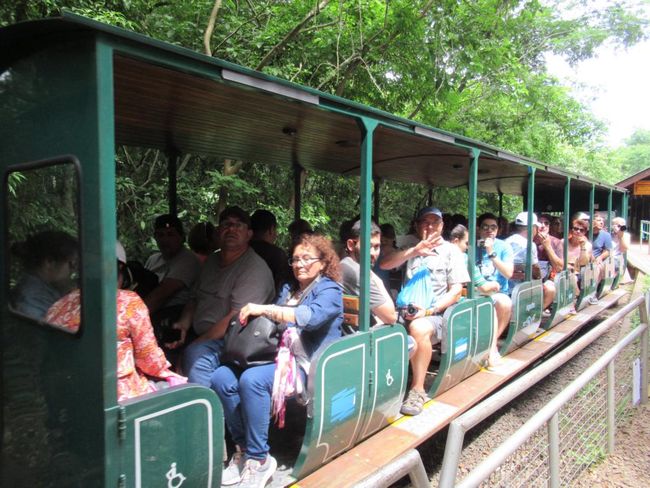
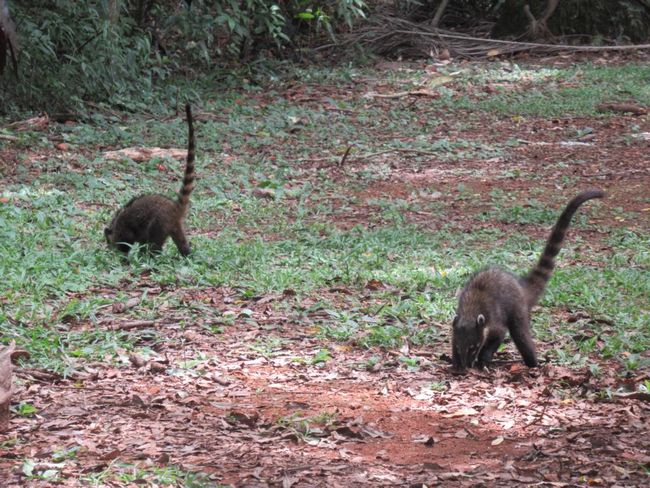
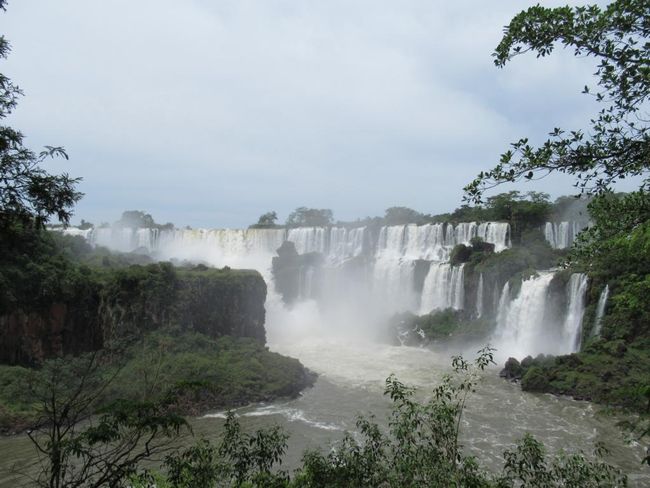
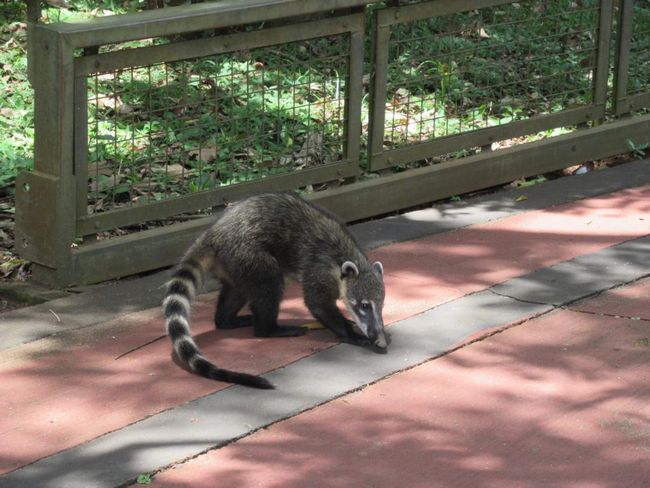
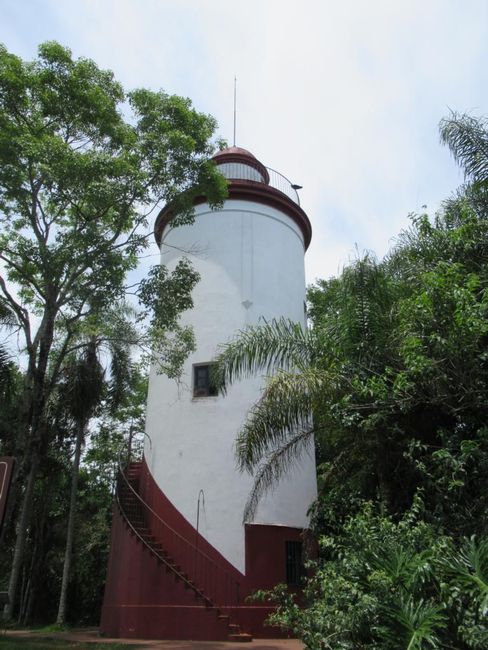
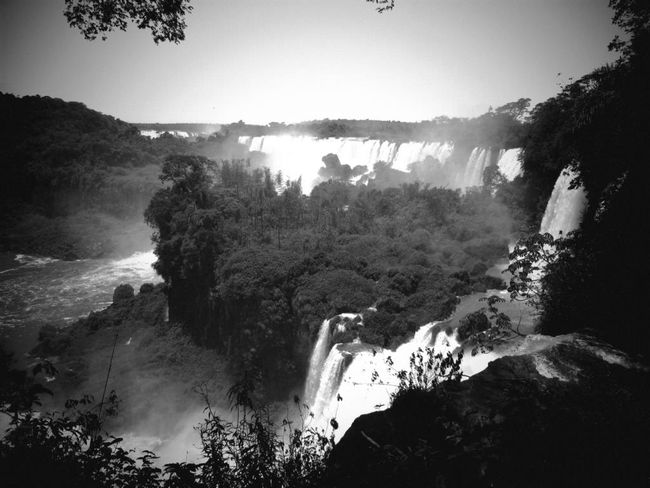
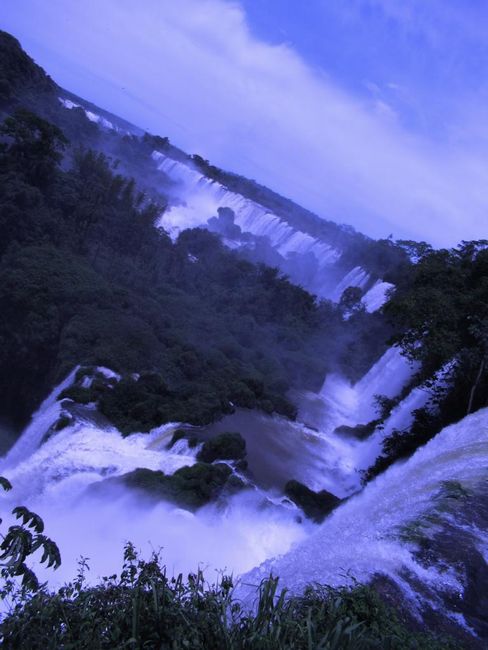
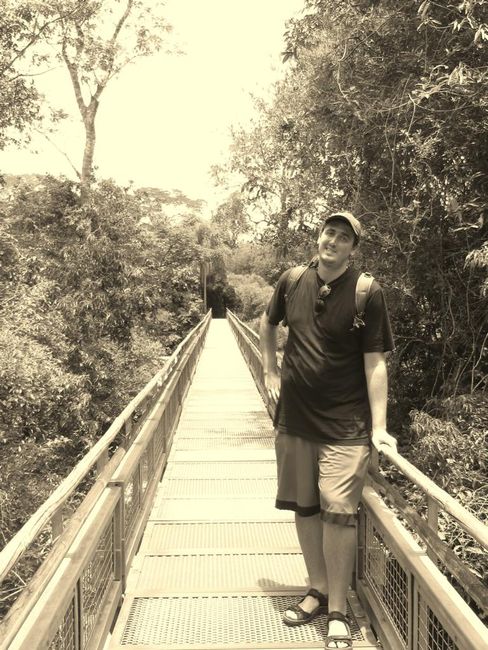
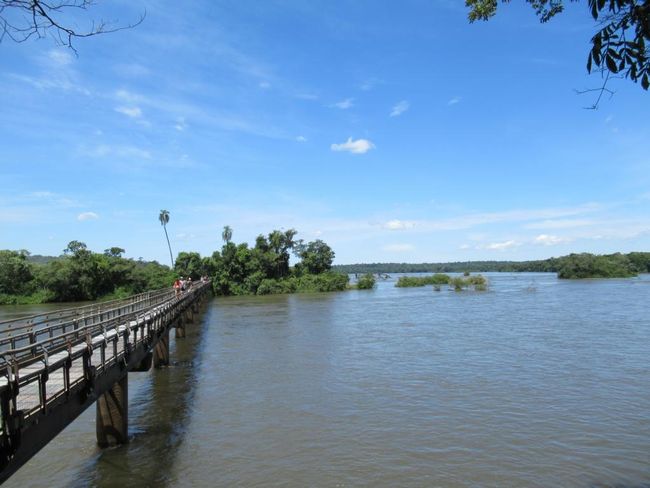
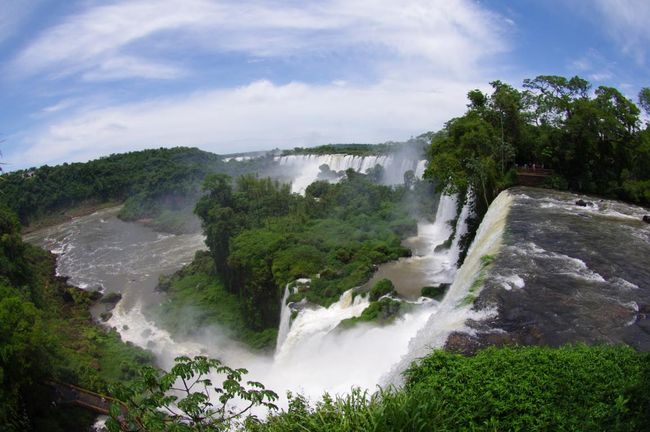
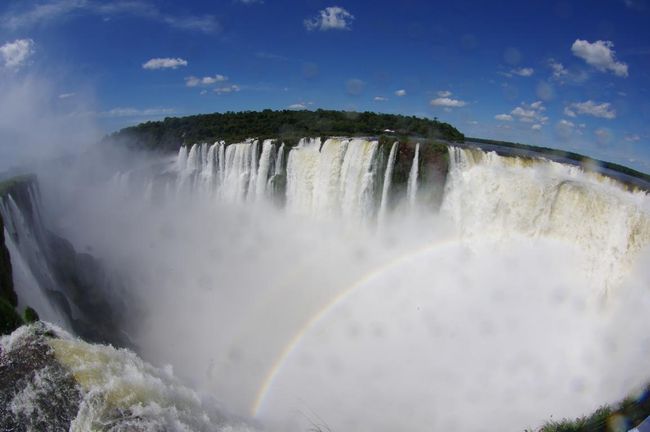
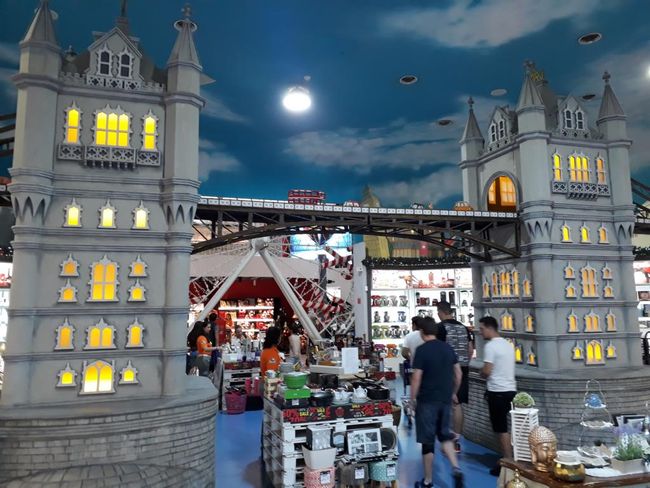
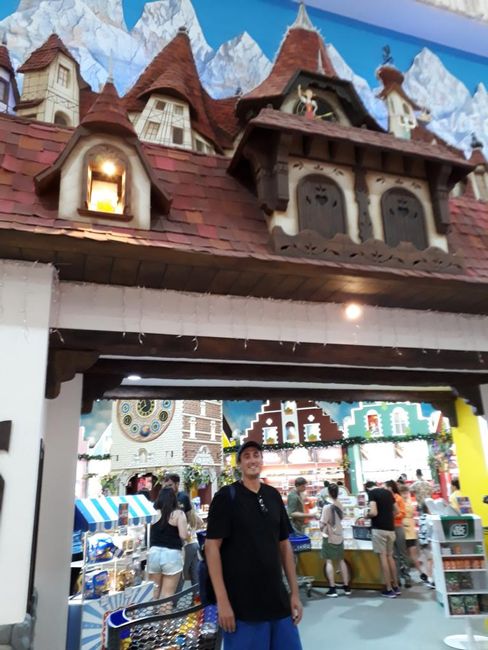

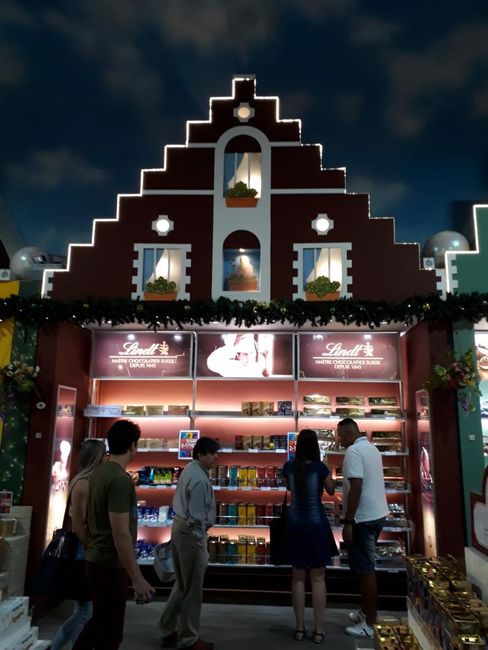
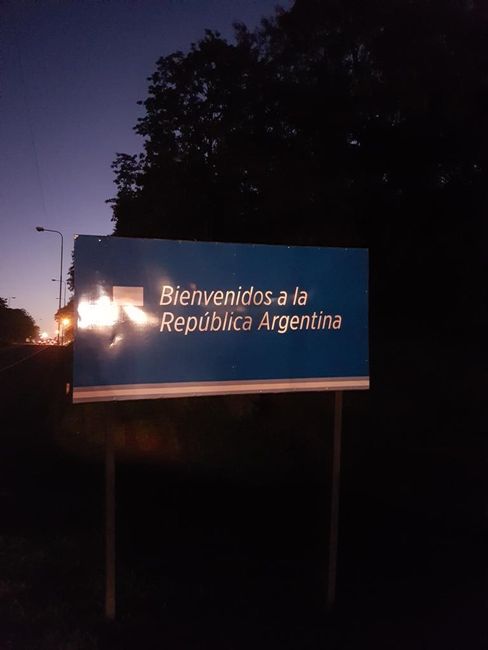
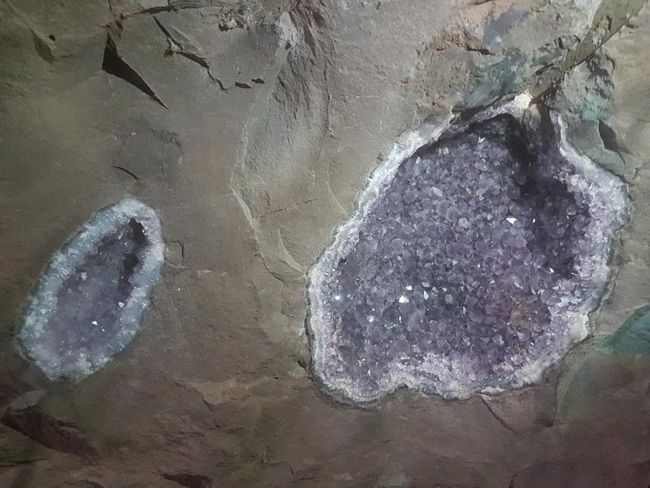
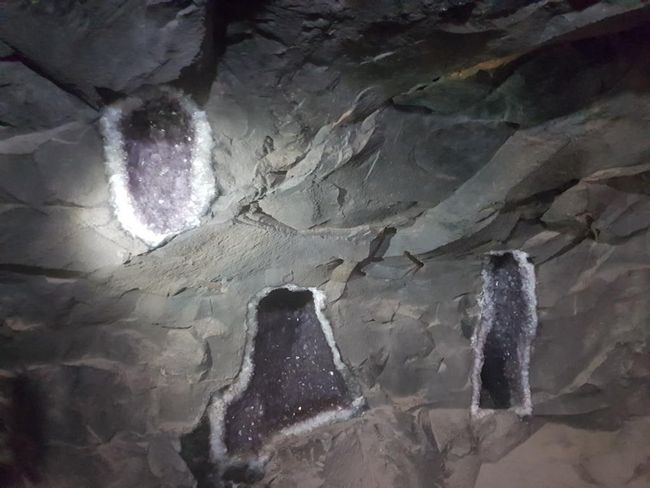
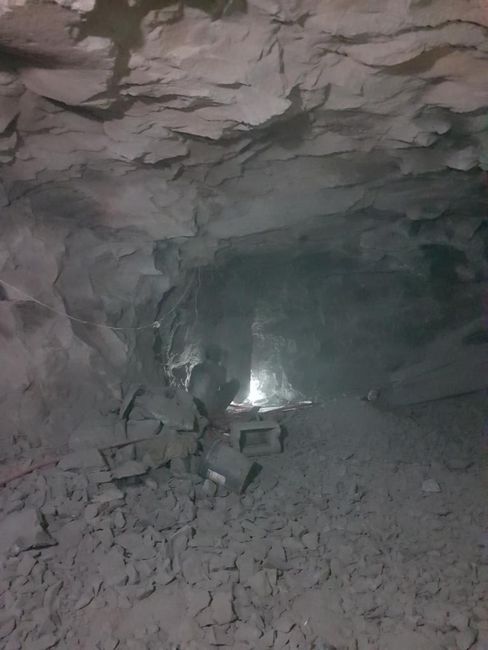
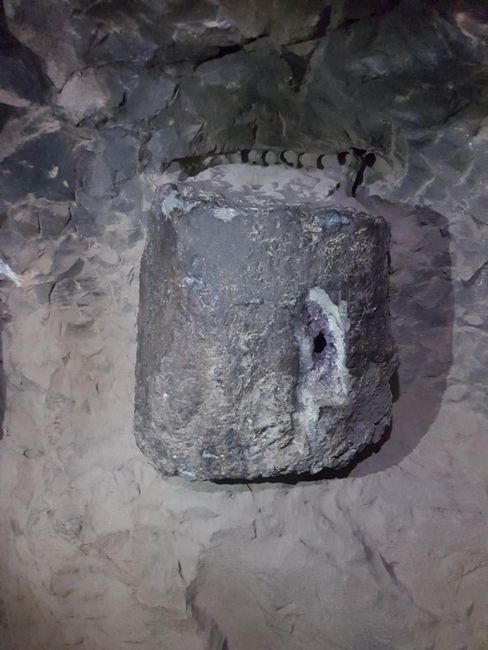
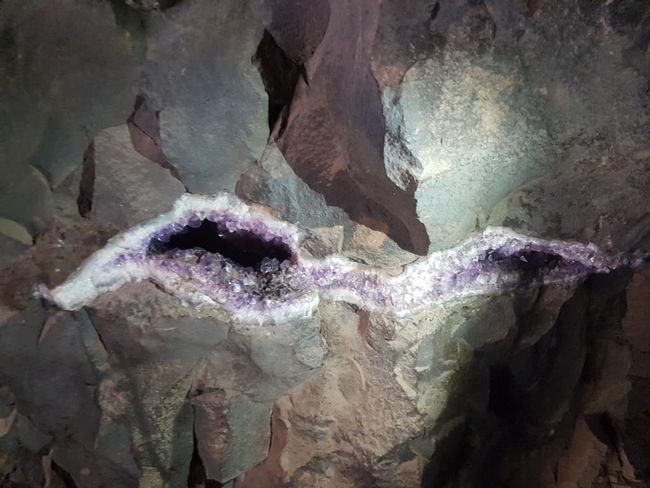
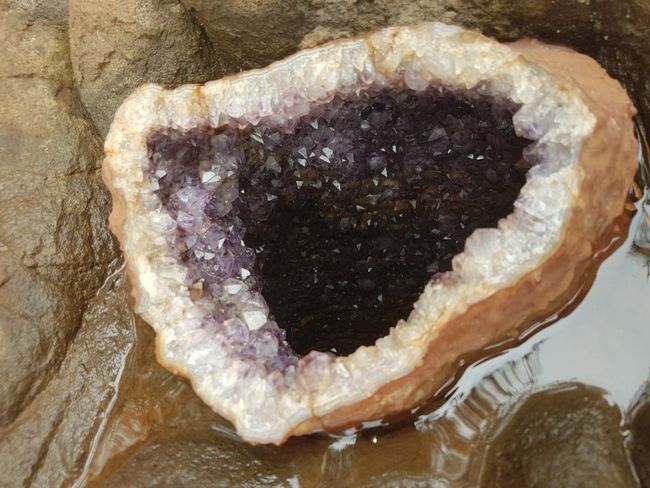
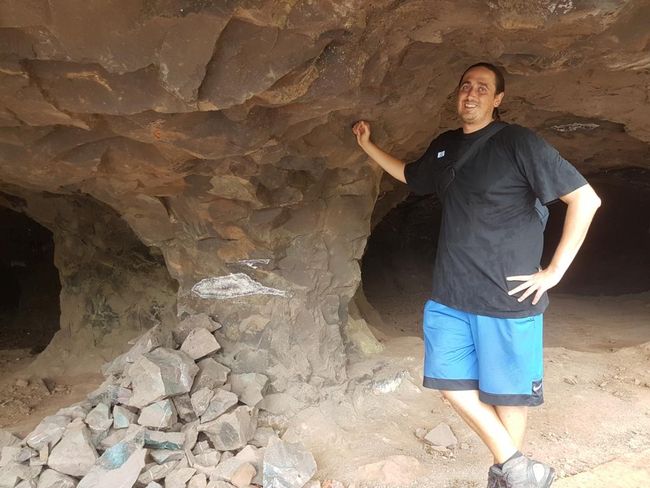
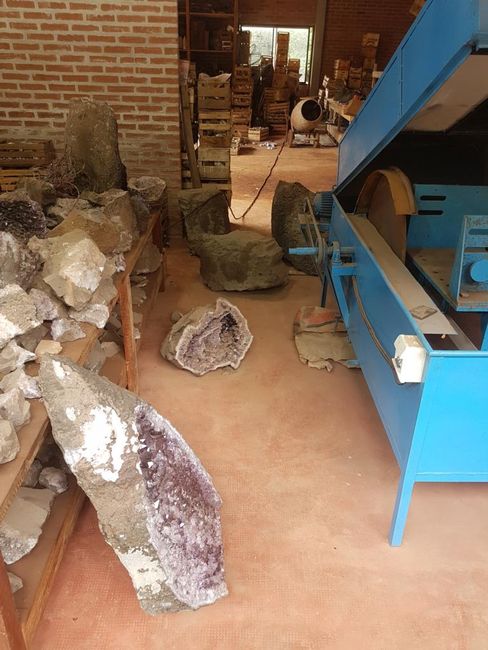
Harpidetu Buletinera
On the next day, we took a break from waterfalls because it was Monday, and we had booked a special tour of the Itaipu Dam. However, we had to go back to Paraguay for that. We had already decided the day before not to try the bus, but to look for a driver directly. Getting to Ciudad del Este through Brazil was one thing, but from there to the dam, we would have to search for a bus, and the whole thing honestly seemed too stupid to us. The driver had approached us days before; his "office" was next to our hotel. There had already been a misunderstanding when we inquired about prices for the Itaipu Dam in CIUDAD DEL ESTE. It is definitely not the first time that we experience Latinos simply not listening to us. He thought we wanted to go to the Brazilian side of the dam. Instead of clarifying the misunderstanding and giving us a new price, he insisted on persuading us to visit the dam in Brazil. I explained to him countless times, in what I believe was clear Spanish, that we wanted to go to Paraguay because we DID NOT want to do the standard tour and WE ALREADY HAD A RESERVATION FOR A SPECIAL TOUR. In retrospect, we should have just looked for another driver; this one was obviously not particularly interested in earning money in return for a ride to Paraguay. But he was there, we were tired, and didn't feel like starting the whole negotiation over again. At some point, we agreed on a price and a pick-up time for the next day. This time, the driver insisted that all entry and exit procedures had to be done, so we drove from immigration office to immigration office to get the necessary stamps. At the Brazilian border, I wanted to know for sure and asked if it was really necessary to enter the country just for transit. The woman replied somewhat annoyed that it was indeed necessary to avoid illegal transit, but if I didn't want to do it, I could just skip it and drive through. Uh, excuse me, what exactly? That was not the answer I had expected, stupid cow. This lady definitely didn't choose this job out of passion.
When we finally arrived at the dam, our driver was completely shocked when he realized that we wouldn't be doing the panoramic tour that only lasts an hour, but a special tour that lasts 2.5 hours. It was simply unbelievable! I have no idea how many times I had said that we booked a special tour, I had said it in person, in voice messages, and written it on WhatsApp! And of course, we were there too early because we had allowed enough time for customs procedures. Well, the poor guy had no choice but to wait for us or leave us and drive back to Puerto Iguazu without getting paid; I didn't care at all. Jörg and I went for lunch first until our tour started. Damn idiot!
We were the only two participants on the technical tour, but we were still driven around in a huge bus.
After handing out the safety helmets, the tour started with the screening of the same commercial film we had already seen during the sound and light show. During the film, you are bombarded with numbers and facts; the ambitious project is praised to the highest degree and only presented from the positive side. The negative aspects are not mentioned. For example, 145 workers died during the construction work. Several thousand indigenous people lost their homes, and a total of about 40,000 people – mainly Guarani Indians – had to be resettled. Subtropical rainforest was cleared for the construction of the dam, and the huge Sete Quedas waterfalls were permanently flooded. Also, considering the fact that roads had to be built to transport the massive turbines from the coast of Brazil to the construction site, one could question the CO2 footprint of the allegedly environmentally friendly project.
The dam was built as a joint project between Brazil and Paraguay. The construction was decided in 1973 and started in 1974. The power plant was put into operation from 1984 onwards, with more and more turbines going online one after another until the 18th turbine was completed in 1991. It was expanded by 2 more turbines in 2005, and the final completion was announced in 2007.
The iron used could build 380 Eiffel Towers. About 34,000 people were employed on the construction site.
The structure is supposed to remain operational for at least 250 years. The biggest challenge is the sediments that form on the lake side of the dam. The total capacity of the 20 turbines is 14,000 megawatts. From 1984 to 2013, Itaipu generated 2135 terawatt-hours of electricity. In 2016, a new record was set with just over 103 terawatt-hours of electric energy generated. 10 turbines belong to Paraguay and Brazil each. Since Brazil paid for the construction costs, there is a contract stipulating that excess energy must be sold to the contracting partner on special terms. So there are only 2 buyers. With an average operation of only 2.5 turbines, 90% of Paraguay's energy needs can be met. With the remaining 17.5 turbines, only 15% of Brazil's energy needs can be produced. Already, 2 of the 20 turbines have almost the same water flow at full capacity as the Iguazu Falls. The dam is a total of 7,760 meters long, the dam wall is 196 meters high, and the base is 273 meters wide. About 3,200 people from both countries are employed in the power plant.
First, we drove to a viewpoint which was opposite the one we had visited during the sound and light show, so we could admire the impressive structure from the other side. This platform was right next to the relief sluices, which are only opened very rarely, at the end of the rainy season.
On the way, we passed the substation, which unfortunately cannot be visited as part of the tour.
Then we went to the power plant and entered the dam wall. The dam wall has a triangular cross-section and is hollow inside. It is quite a challenge to find your way around here; we constantly rode up and down with different elevators, but none of the lifts seemed to serve all 144 levels.
Next, we visited the control center. Here, the demand from consumers is matched with the planned production, and the sale prices are determined.
We also visited the control room. Nowadays, the power plant is controlled exclusively digitally. However, all settings can also be operated analogically in case of emergency.
The highlight of the tour was the visit to one of the drive shafts of the generators. The thing was not only huge but also very loud.
Finally, we drove back on the dam wall. We made a stop along the way where we had a great view of the huge reservoir. In addition, the functioning of the water inlet gates and their maintenance were explained to us.
This is where the tour ended, and we drove back to the visitor center, where our annoying taxi driver was already waiting for us. On the way back, he didn't pay much attention to entry and exit procedures anymore, so once again, we illegally traveled through Brazil back to Argentina.
The visit to the Itaipu Dam was incredibly interesting, although not much technical information was shown on the technical tour. I would have liked to see, for example, the internal GIS switchgear, but access is unfortunately not possible. In addition, we were flooded with data and facts to the point where it was difficult to remember everything in such a short time. Nevertheless, I can only recommend a visit to the dam as a complement to the Iguazu Falls.
On Tuesday, it was waterfall day again because we went to the Argentine side of the Iguazu Falls. We took a bus directly to the entrance. Unlike Brazil, you cannot book tickets online here. In this regard, Brazil is the most advanced country we have visited because you can pay for EVERYTHING with a credit card, even from beach vendors with tray tables on Copacabana Beach, who try to sell you beach towels, hats, and other stuff. Well then, we were glad that at least we could pay the entrance to the Parque Nacional in Argentina with a card; according to the guidebook, this has not been possible for very long. And it really is recommended to pay with a card for everything possible in this country; we learned this lesson when we withdrew cash for the first time from an ATM and almost had a heart attack. In Argentine ATMs, you can only withdraw pesos equivalent to about $130 at a time, and you pay an additional $10 fee to the Argentine bank on top of the fees from your own credit card. If you add the usual exchange rate loss, you quickly end up with exorbitant fees of 20% per cash withdrawal! As a traveler, that adds up to poor days... so the motto from now on is to pay as much as possible with a credit card, no matter how small the amount.
The Argentine National Park is divided into several circular trails. In general, on the Argentine side, you do not have such a beautiful panoramic view of the falls as in Brazil, but you get much closer to the waterfalls. So it is definitely worth visiting both sides to have the best experience! There is the Paseo Inferior, which runs along the opposite side of the falls, the Paseo Superior, which goes over the falls, and the Paseo to Garganta del Diablo, which we had already seen during the full moon tour. The hiking trails are prepared sidewalks that cannot be deviated from. Although all the paths are not particularly long (a few kilometers), you need the whole day if you want to walk at a leisurely pace and take a break at the viewpoints. You could also do various other activities in the park (e.g. a boat tour or jungle walks), but you hardly have enough time if you only have one day planned. It wasn't too tragic during the day that we got completely wet at Garganta del Diablo because it was hot and sunny. It's worth going to Garganta in the evening when there are fewer visitors, and after all, you should save the highlight until the end. In daylight, it is even more impressive than in the evening.
As part of our "Natural Resources Project," on our last day in Puerto Iguazu, we visited the Amethyst Mine in Wanda. Originally, we had planned to visit an amethyst mine in Artigas, Uruguay. However, it would have been quite cumbersome to get to this place in the far north of Uruguay on the border with Brazil, so we chose Wanda because it was relatively easy to manage. In retrospect, the mine in Artigas would probably have been the better choice because Wanda is an absolute tourist trap. We went there with our old annoying taxi driver, who had already taken us to the Itaipu Dam. We chose him because he offered us the best price, even a tour with a group would have been more expensive. So we reluctantly accepted his rather unpleasant company. The tour of the mine is relatively short, as is customary at such tourist sites, and afterwards, you are asked quite insistently for a tip, and at the end, they try to sell you cheap stones at totally inflated prices in the sales room.
Amethysts are formed under certain conditions over long periods of time, during which certain components such as pressure, minerals, and temperature remain constant. Usually, the shells consist of agate because it crystallizes faster.
Since the mine is no longer actively exploited but only used for tourism, the beautiful thing is that many opened geodes have been left in the wall so that tourists can look at them and take pictures.
In the 1970s, amethysts started to be mined in this region of Argentina. This mine, namely the amethyst deposit in Wanda, was discovered by chance by the family who owned the land. The woman used a hole in the ground to wash clothes when she cut her finger on a crystal in the interior. Even then, the family did not know what it was until their son saw amethyst geodes during a trip to another country and realized that they also had them on their land.
Exploring such mines is strictly limited in Argentina. The blasting in the mines destroys water barriers in the rock, so that the groundwater is released and sucked to the surface, so to speak. There are large groundwater reserves in this area, which are protected by the government as water reserves. However, the law stipulates that mines that are no longer being exploited must be filled up and sealed. So that this mine can remain open to tourists, there is a miner who advances the work at a leisurely pace. This is quite interesting so that you can see how the work progresses. Based on the characteristics of the rock, the experienced miner can determine where geodes are located. Then, he drills a small hole to test by tapping whether the rock is hollow inside and whether there are amethyst crystals inside. Just when we were there, the worker was carefully chiseling out such a huge geode from the wall. This miner certainly has a relatively pleasant life compared to other miners we have encountered. Apart from the fact that the mine doesn't go particularly deep into the rock, is built to be structurally safe, and there is little air pollution and other hazards, he seems to have no stress or pressure at work.
Of course, we would have loved to buy one of the beautiful geodes, but they weigh up to 15 kg for a piece that is up to 10 cm high, so they are not suitable for travel luggage. :-)
That brings us to the final goodbye to Paraguay and Brazil.
We can say relatively little about Brazil as a conclusion because we only visited a small part of the vast country, mainly the jungle areas. Besides the rich nature, we saw countless animals, which will probably be the most lasting memories. Our time in the Amazon was particularly special for us and rich in experiences. What I liked best about the Brazilian mentality were 2 things: 1. you can pay absolutely everything with a credit card, even from beach vendors with tray tables. There is actually no need to exchange money into Brazilian reais. 2. There is much less body shaming here. Even the fattest woman walks around here in a tight, crop top with a huge neckline, and no one cares. Everyone can be themselves, and no one is looked at stupidly. There are even fat mannequins or ones with huge breasts in the shop windows. Not just the standard 08-15 norm. I found that very likable. However, it was a bit exhausting that no one here seems to speak foreign languages, not even at tourist places. That would be alright, but Brazilians also seem to have little understanding if you don't speak Portuguese yourself. And let's be honest: who does that?
Paraguay was absolutely enchanting and we liked it very much. Although there are no significant sights or absolute "must-sees" here, the country and its people are just super nice and friendly. People are happy to have visitors from abroad, like to get into conversation, and welcome you warmly. Everyone immediately holds their Terere cup out to you; the cup goes around in the group, and everyone drinks from it. This is called Terere-Yere, which means drinking cold tea together and is diligently celebrated in the country. A truly significant part of Paraguayan culture. If you then mention that you have already tried the drink, even visited a mate factory, you will be looked at with great enthusiasm and wide eyes.
However, the absolutely lousy price-performance ratio in terms of accommodation and hotels was a bit annoying.
We also enjoyed getting off the beaten track again because there are hardly any foreign tourists in Paraguay.
The country is rich in craftsmanship; it would definitely be worthwhile to go on a shopping tour through the country with a full wallet and an empty suitcase. Renting a car was also a really good idea here; it allows you to travel comfortably throughout the country and see a lot. Surprisingly, the roads are in very good condition. One highlight during our road trip was definitely visiting the Mennonites in the Chaco; the long journey was more than worth it. You can't expect English here. Either you speak Spanish, Guarani, or communicate with hands and feet.
We can highly recommend Paraguay to anyone who wants to get off the beaten track and not just tick off major sights. It is also quite safe here, and you feel comfortable and welcome. In any case, we really liked the country.
Harpidetu Buletinera
Erantzun
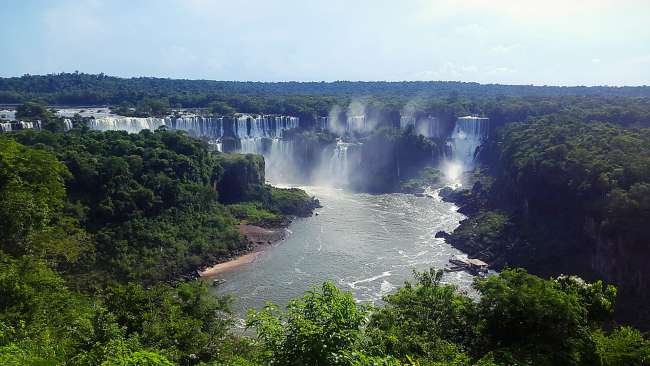
Bidaien txostenak Argentina

